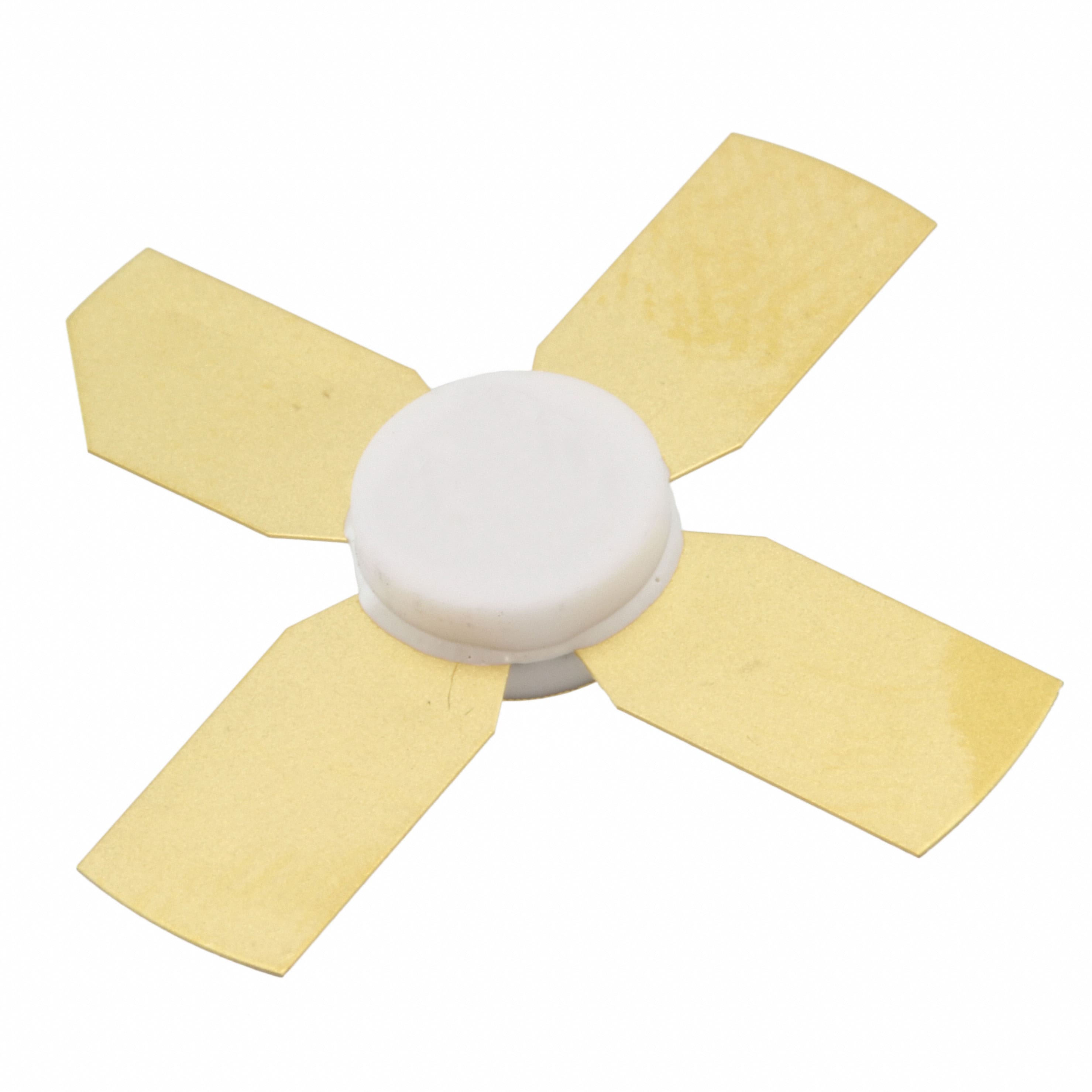Vedi le specifiche per i dettagli del prodotto.

MRF160 Transistor: Encyclopedia Entry
Introduction
The MRF160 is a high-frequency transistor that belongs to the category of RF power transistors. This entry provides an overview of the MRF160, including its basic information, specifications, pin configuration, functional features, advantages and disadvantages, working principles, application field plans, and alternative models.
Basic Information Overview
- Category: RF Power Transistor
- Use: Amplification of radio frequency signals
- Characteristics: High power gain, high efficiency, and wide frequency range
- Package: TO-62 metal can package
- Essence: High-performance RF amplification
- Packaging/Quantity: Typically available in single-unit packaging
Specifications
- Frequency Range: 30 MHz to 400 MHz
- Power Output: 60 Watts
- Voltage Rating: 12 Volts
- Current Rating: 5 Amperes
- Gain: 13 dB
- Efficiency: 55%
Detailed Pin Configuration
The MRF160 transistor has a standard pin configuration as follows: 1. Base (B) 2. Emitter (E) 3. Collector (C)
Functional Features
- High power gain for amplifying RF signals
- Wide frequency range for versatile applications
- High efficiency leading to reduced power consumption
- Reliable performance in demanding RF amplification tasks
Advantages and Disadvantages
Advantages
- High power gain enables effective signal amplification
- Wide frequency range allows for diverse application scenarios
- High efficiency results in reduced power consumption
- Reliable performance in demanding RF amplification tasks
Disadvantages
- Limited to lower frequency range compared to some other RF transistors
- Higher cost compared to lower power transistors
Working Principles
The MRF160 operates based on the principles of bipolar junction transistors (BJTs). When biased and driven with appropriate input signals, it amplifies the RF signals by controlling the flow of current between its terminals.
Detailed Application Field Plans
The MRF160 transistor finds extensive use in various applications, including: - RF communication systems - Radar systems - Broadcast transmitters - RF heating systems - Industrial RF equipment
Detailed and Complete Alternative Models
Some alternative models to the MRF160 include: - MRF150 - MRF151 - MRF162 - MRF163
In summary, the MRF160 transistor is a high-performance RF power transistor with wide-ranging applications in RF communication, radar, broadcasting, and industrial equipment. Its high power gain, efficiency, and reliability make it a preferred choice for demanding RF amplification tasks.
Word Count: 346
10 domande e risposte comuni relative all'applicazione di MRF160 nelle soluzioni tecniche
What is the MRF160 transistor used for?
- The MRF160 transistor is commonly used in high-frequency RF amplifier applications, such as in radio transmitters and other communication equipment.
What are the key specifications of the MRF160 transistor?
- The MRF160 is a power MOSFET transistor with a frequency range of 30 to 400 MHz, a voltage rating of 60V, and a power output of approximately 150 watts.
Can the MRF160 be used in linear amplifier designs?
- Yes, the MRF160 can be used in linear amplifier designs, but it may require careful biasing and matching to achieve good linearity.
What are the typical operating conditions for the MRF160?
- The MRF160 is typically operated at a supply voltage of around 28V and requires proper heat sinking to dissipate the heat generated during operation.
Is the MRF160 suitable for high-power RF applications?
- Yes, the MRF160 is designed for high-power RF applications and is capable of delivering significant output power when properly configured.
What are the common failure modes of the MRF160 transistor?
- Common failure modes include overvoltage, overcurrent, and overheating, which can lead to degradation or permanent damage to the transistor.
How should the MRF160 be mounted for optimal performance?
- The MRF160 should be mounted on a suitable heat sink with proper thermal interface material to ensure efficient heat dissipation.
Can the MRF160 be used in push-pull amplifier configurations?
- Yes, the MRF160 can be used in push-pull amplifier configurations to achieve higher output power and improved linearity.
What are the typical applications of the MRF160 in technical solutions?
- The MRF160 is commonly used in RF power amplifiers for amateur radio, industrial RF heating systems, and other high-power RF applications.
Are there any recommended driver circuits for the MRF160?
- Various driver circuits can be used with the MRF160, but it's important to ensure that the driver circuit is capable of providing the necessary drive level and impedance matching for optimal performance.

